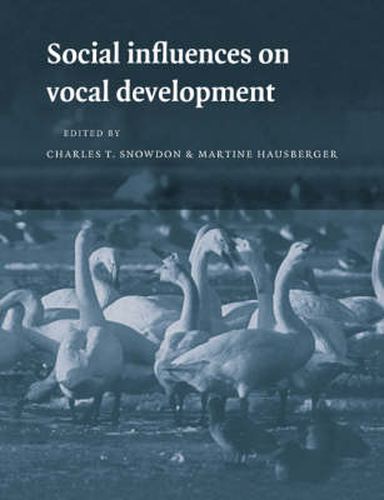Readings Newsletter
Become a Readings Member to make your shopping experience even easier.
Sign in or sign up for free!
You’re not far away from qualifying for FREE standard shipping within Australia
You’ve qualified for FREE standard shipping within Australia
The cart is loading…






For at least 30 years, there have been close parallels between studies of birdsong development and those of the development of human language. Both song and language require species-specific stimulation at a sensitive period in development and subsequent practice through subsong and plastic song in birds and babbling in infant humans leading to the development of characteristic vocalisations for each species. This book illustrates how social interactions during development can shape vocal learning and extend the sensitive period beyond infancy and how social companions can induce flexibility even into adulthood. Social companions in a wide range of species including birds and humans but also cetaceans and nonhuman primates play important roles in shaping vocal production as well as the comprehension and appropriate usage of vocal communication. This book will be required reading for students and researchers interested in animal and human communication and its development.
$9.00 standard shipping within Australia
FREE standard shipping within Australia for orders over $100.00
Express & International shipping calculated at checkout
For at least 30 years, there have been close parallels between studies of birdsong development and those of the development of human language. Both song and language require species-specific stimulation at a sensitive period in development and subsequent practice through subsong and plastic song in birds and babbling in infant humans leading to the development of characteristic vocalisations for each species. This book illustrates how social interactions during development can shape vocal learning and extend the sensitive period beyond infancy and how social companions can induce flexibility even into adulthood. Social companions in a wide range of species including birds and humans but also cetaceans and nonhuman primates play important roles in shaping vocal production as well as the comprehension and appropriate usage of vocal communication. This book will be required reading for students and researchers interested in animal and human communication and its development.